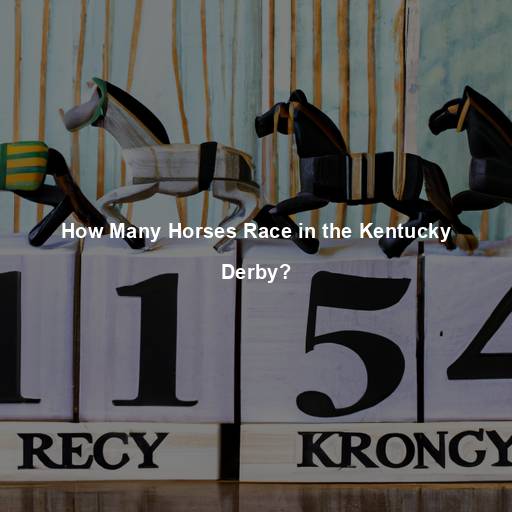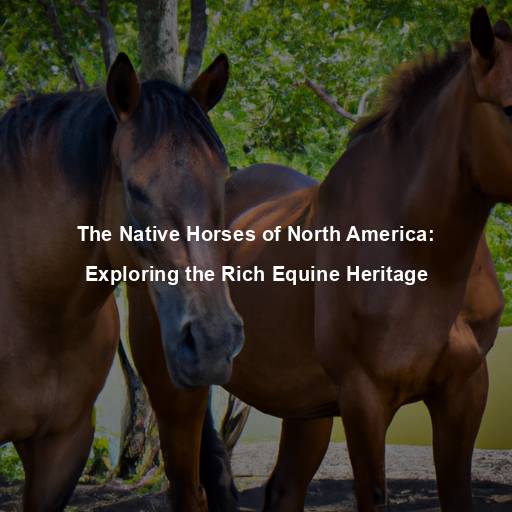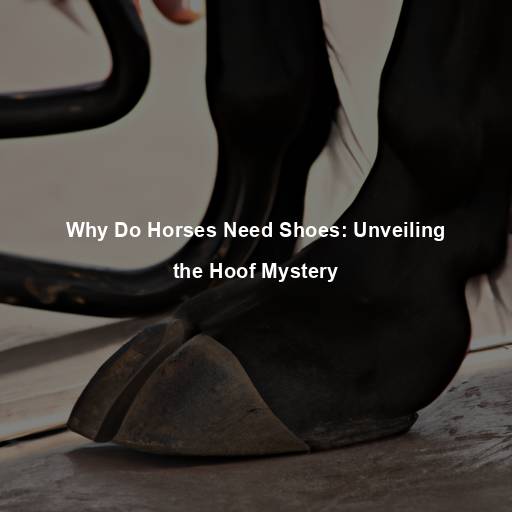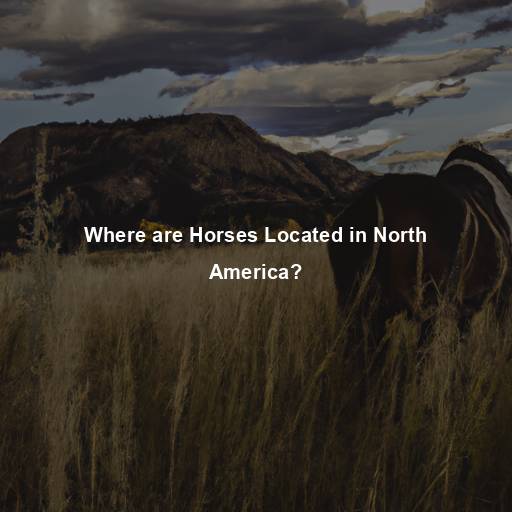How Many Horses Race in the Kentucky Derby?
Last Updated on October 29, 2023 by Evan
Contents
- 1 Understanding the Prestigious Kentucky Derby
- 2 The Field Size of the Kentucky Derby
- 3 The Importance of Field Size
- 4 The Kentucky Derby’s Ever-Evolving Legacy
- 5 The Kentucky Derby: Where Dreams Are Born
- 6 FAQs – How Many Horses Race in the Kentucky Derby?
- 6.1 How many horses are allowed to race in the Kentucky Derby?
- 6.2 What happens if more than 20 horses are entered for the Kentucky Derby?
- 6.3 How are the 20 horses chosen for the Kentucky Derby?
- 6.4 Have there ever been less than 20 horses racing in the Kentucky Derby?
- 6.5 What is the impact of a smaller field size in the Kentucky Derby?
Understanding the Prestigious Kentucky Derby
Every year, the Kentucky Derby gathers horse racing enthusiasts from around the globe, as crowds flock to Churchill Downs in Louisville, Kentucky, on the initial Saturday of May. This iconic event, dubbed “The Most Exciting Two Minutes in Sports,” kicks off the esteemed Triple Crown series, encompassing the Preakness Stakes and the Belmont Stakes. The allure of this time-honored race extends far beyond die-hard fans, charismatic enough to captivate even the most nonchalant observers, who revel in the excitement and grace exuded by these magnificent creatures.
The Field Size of the Kentucky Derby
The field size of the Kentucky Derby has varied over the years, but it generally consists of a maximum of 20 horses. This limit ensures a fair and safe race, allowing each horse and jockey to have the best chance at success. However, the number of contenders can be influenced by several factors, including the number of qualifying horses and the discretion of the race organizers.
The field size of the Kentucky Derby typically consists of a maximum of 20 horses, allowing for a fair and safe race. However, factors such as the qualifying system and stewards’ discretion can influence the number of contenders. The size of the field impacts the dynamics of the race, betting strategies, and the overall experience for participants and spectators.
Factors Influencing the Field Size
- Qualifying System: The Kentucky Derby has a unique qualifying system based on points earned in designated prep races leading up to the event. Typically, the horses with the highest point totals secure a spot in the Derby field. However, the number of points required for eligibility can vary from year to year, depending on the overall quality and competitiveness of the contenders.
The thundering hooves of anticipation are abruptly silenced when fate’s hand delivers a cruel twist to the noble steeds of the Kentucky Derby. In the blink of an eye, injuries and unforeseen obstacles unleash cascading ripples of uncertainty, leaving contenders teetering on the precipice of possibility. Amidst the chaos, doors previously closed swing open, inviting new contenders to dance with destiny, as they seize the chance to etch their names upon the hallowed grounds of the iconic race. The stage is set, and the canvas of the Kentucky Derby is painted with a tapestry of perplexity and the untamed burstiness of fate.
When it comes to deciding the final field size of a race, there’s a group of individuals who hold all the power – the stewards. These enigmatic figures have the authority to make crucial decisions that could ultimately determine the fate of the race. With their minds swirling with a myriad of factors like the well-being of the horses and jockeys, the condition of the track, and various logistical puzzles, these stewards navigate a complex labyrinth of considerations. Ultimately, their mission is to create a level playing field and guarantee a thrilling and equitable competition for all the contenders.
Historical Field Sizes
Over the years, the field size of the Kentucky Derby has experienced fluctuations. In recent decades, the number of horses allowed to compete has generally remained around the 20-horse mark. However, there have been instances where the field size has exceeded or fallen slightly below this limit.
-
Largest Field Size: The largest field in Kentucky Derby history consisted of 23 horses and occurred in both 1974 and 2020. In 1974, the race famously featured the legendary Triple Crown winner, Secretariat, who triumphed in spectacular fashion. The 2020 Derby, amid the challenges of the COVID-19 pandemic, saw an increased field size to accommodate horses that had qualified but were unable to participate in the rescheduled race earlier in the year.
-
Smallest Field Size: The smallest field in recent memory occurred in 2000 when only 15 horses contested the Derby. This lower number can be attributed to various factors, including the overall quality of the qualifying horses and the stewards’ discretion in determining the final field size.
The Importance of Field Size
The field size of the Kentucky Derby plays a significant role in the dynamics of the race and the overall experience for both participants and spectators. A larger field size can create a more competitive and unpredictable event, as more horses jostle for position and strive to secure a favorable position throughout the race. It also adds to the spectacle and excitement, with a larger number of horses thundering down the track.
On the other hand, a smaller field size may offer certain advantages. With fewer horses to contend with, jockeys can strategize more effectively and potentially avoid traffic congestion or interference during the race. Additionally, a smaller field size can lead to a clearer path to the finish line, enhancing the chances of a cleaner and less chaotic race.
Field Size and Betting Dynamics
The size of the field in the Kentucky Derby has a fascinating impact on both the race and the betting scene that revolves around it. A bigger field means more possibilities for bettors, creating a thrilling variety of choices and potentially greater rewards. The inclusion of each additional horse injects a delightful mix of variables into the equation, making it perplexingly challenging to predict the winner and resulting in heightened odds for certain contenders.
When it comes to horse racing, the size of the field can really shake things up. A smaller field might seem like it would make things easier to predict, but it actually creates a whole new level of complexity. With fewer horses vying for the win, the odds for each contender can shrink, making it a bit trickier to place your bets. This often leads to more cautious betting strategies, as people tend to lean towards the horses that are deemed stronger, which unfortunately can result in smaller payouts.
Strategies for Betting on the Kentucky Derby
Regardless of the field size, betting on the Kentucky Derby requires careful consideration and strategic thinking. Here are some common strategies employed by experienced bettors:
Research and Analysis
When it comes to placing bets on the Kentucky Derby, conducting thorough research and analysis is crucial. Delving into the horses’ past performances, their lineage, the expertise of their jockeys and trainers, and even the conditions of the track can unravel some intriguing insights. By carefully studying factors like speed figures, racing styles, and historical outcomes in comparable race distances, bettors can equip themselves with a wealth of information that may lead to wiser choices. So, before placing your bets, it’s wise to immerse yourself in the intricate details and unravel the hidden patterns that may influence the race’s outcome.
Consider the Field Size
When it comes to crafting a betting strategy, one cannot underestimate the importance of considering the field size. In the midst of a sprawling field, it becomes crucial to pinpoint the horses with favorable post positions and a knack for shining amidst the chaos of crowded races. However, in a more intimate setting with a smaller field, directing our attention towards the horses that have displayed remarkable consistency and the ability to adapt to various race scenarios can prove to be a winning formula. So, whether it’s the vastness or the intimacy of the field, strategic thinking is key.
Evaluate the Odds
Delving into the enigmatic world of horse racing, one must grasp the intricate dance between odds and the tantalizing allure of victory. These odds, like the meandering whispers of the betting public, manifest themselves as a mosaic of perceptions shaped by a myriad of curious elements – whispers of media frenzy, echoes of recent triumphs, and the grandiose reputation of trainers and jockeys. In this realm of equine uncertainty, serendipity may smile upon the discerning eye, revealing hidden treasures among the towering odds, beckoning sly and insightful gamblers towards bountiful rewards.
Spread Bets
In the thrilling world of horse racing, savvy bettors have discovered a strategic gem known as spread betting. By diversifying their bets across multiple horses and scenarios, these individuals maximize their odds of victory. Imagine placing a potent combination of win, place, and show bets, effectively safeguarding your potential payout regardless of where your chosen horse crosses the finish line. With spread betting, the thrill of the race is amplified, as the potential for triumph becomes a tantalizing puzzle waiting to be solved.
Set a Budget and Stick to It
When it comes to the exhilarating world of gambling, one golden rule should never be forgotten: budget, budget, budget! Just like a master tightrope walker, setting a limit and sticking to it is absolutely necessary. Keep those impulsive and emotional bets at bay, my friend, for discipline is the key to avoiding those pesky potential losses. Remember, the Kentucky Derby is all about the thrill of entertainment, so let’s make sure responsible gambling practices guide us through the maze of excitement.
The Kentucky Derby’s Ever-Evolving Legacy
Throughout its long and storied history, the Kentucky Derby has evolved and adapted to the changing times. From its humble beginnings in 1875 to its current status as a global sporting spectacle, the Derby continues to capture the imagination of millions around the world.
Cultural Significance
Beyond the race itself, the Kentucky Derby has become a cultural phenomenon. It is a celebration of tradition, fashion, and Southern hospitality. From the iconic Twin Spires to the playing of “My Old Kentucky Home,” the Derby embodies the rich heritage and spirit of Kentucky.
Economic Impact
It’s undeniable that the Kentucky Derby brings an ocean of economic vitality along with its thrilling horse races. This iconic event effortlessly entices people from all corners, resulting in a ripple effect that boosts the local economy. It’s not just about the money flowing through ticket sales and souvenirs; it’s the infectious buzz that fills the air, luring visitors to pack hotels, dine at restaurants, and explore the surrounding attractions, all of which pump substantial revenue into the host city and state, leaving no doubts about its profound economic impact.
A Platform for Equine Excellence
For horse owners, trainers, and jockeys, the Kentucky Derby represents the pinnacle of their careers. It serves as a platform to showcase their talent, skill, and dedication to the sport. A victory in the Derby can solidify their place in horse racing history and open doors to future opportunities.
Inspiring Dreams and Aspiring Jockeys
Every year, the Kentucky Derby charms us with its mystical ability to awaken dormant dreams and set hearts ablaze with a relentless desire for horse racing. Like a siren’s call, the allure of the “Run for the Roses” bewitches aspiring jockeys, beckoning them to chase their wildest equestrian ambitions. It is within these hallowed grounds that stories of triumph and glory have been etched into the annals of sports history, their echoing whispers fueling the fire that burns within the next generation of fierce riders.
The Enduring Magic of the Kentucky Derby
In conclusion, the Kentucky Derby is an extraordinary event that captivates the hearts and minds of people worldwide. Its rich history, fierce competition, and unforgettable moments have cemented its place as a true American tradition. Whether it’s the thrill of the race, the pageantry, or the stories of triumph and defeat, the Kentucky Derby continues to inspire, entertain, and remind us of the enduring magic of the horse-human bond. ## The Kentucky Derby: A Global Spectacle
International Reach
While the Kentucky Derby is deeply rooted in American culture, its influence extends far beyond the borders of the United States. The race has attracted international attention and has become a significant event in the global horse racing calendar. Horses from around the world, representing different countries and breeding traditions, aspire to participate in the “Run for the Roses”.
International Contenders
In recent years, the Kentucky Derby has seen an increase in international contenders. Trainers and owners from countries such as Ireland, England, Japan, and Dubai have recognized the prestige and allure of the race and have sought to test their horses against the best American talent. This international diversity adds an exciting dimension to the event and showcases the global reach of horse racing.
Global Broadcast and Media Coverage
The Kentucky Derby’s astonishing fame knows no bounds as it captivates the hearts and minds of spectators across the globe, thanks to an expansive media circus enveloping the event. From the television screens that flicker with the race’s exhilarating moments to the digital realm that streams it live, the Derby’s magnetic appeal transcends borders and unites millions. Through this worldwide exposure, the Derby not only showcases the beauty of horse racing but also unfurls its profound significance as an emblem of American heritage and time-honored customs.
Inspiring Horse Racing Cultures
The Kentucky Derby, a hallowed tradition in the world of horse racing, boasts a captivating magnetism that transcends its own boundaries. This illustrious event has sparked the proliferation of equestrian cultures around the globe, leaving an indelible mark on the sport. With its opulence and fervor, the Derby’s unparalleled spectacle has acted as a catalyst for the birth of equally esteemed races and extraordinary gatherings in countless corners of the earth.
The Epsom Derby (England)
Often referred to as the “English Derby,” the Epsom Derby is one of the most prestigious horse races in the United Kingdom. First run in 1780, it predates the Kentucky Derby by almost a century. The Epsom Derby shares similarities with its American counterpart, including a rich history, high stakes, and an enduring legacy.
The Melbourne Cup (Australia)
Every year, like clockwork, the city of Melbourne trembles with anticipation as the first Tuesday of November approaches. The ethereal magic of the Melbourne Cup weaves its spell, captivating an entire nation in its irresistible charms. As the horses gallop towards the finish line, hearts pound and dreams soar, for this is no ordinary race – it is a grand tapestry of tradition, glamour, and unadulterated thrill. Far across the globe, the echoes of the Kentucky Derby find a kindred spirit in this remarkable event, uniting racing enthusiasts in their fiery passion for the sport that knows no borders.
The Dubai World Cup (United Arab Emirates)
The Dubai World Cup, established in 1996, has quickly become one of the most prestigious horse races in the world. Held at the state-of-the-art Meydan Racecourse in Dubai, this event showcases the opulence and grandeur associated with the United Arab Emirates. The Dubai World Cup has attracted top international horses, jockeys, and trainers, further solidifying its status as a global racing spectacle.
Uniting Cultures Through Horses
There’s something undeniably magical about horse racing, a sport that effortlessly bridges gaps between diverse cultures and unites people with its captivating allure. From the renowned Kentucky Derby to other prestigious events, these exhilarating races have the power to blur boundaries and forge connections. Regardless of nationality or language, horse racing enthusiasts find solace in their shared reverence for these majestic creatures, bound by their mutual appreciation for the grace and power that define this awe-inspiring sport.
The Kentucky Derby: Where Dreams Are Born
A Platform for Equine Dreams
The Kentucky Derby serves as a platform where lifelong dreams are born and realized. For breeders, owners, and trainers, the opportunity to participate in the Derby represents the pinnacle of their aspirations. The journey to reach this prestigious race is often marked by years of meticulous breeding, careful selection, and dedicated training.
Breeders’ Dreams
The world of horse racing owes a debt of gratitude to the breeders who laboriously navigate the labyrinth of bloodlines and pedigrees in pursuit of the ultimate equine prodigy. With unwavering persistence, these unsung heroes dedicate their lives to the art of horse breeding, meticulously selecting stallions and mares to weave a tapestry of extraordinary potential. Their quest for greatness is fueled by the tantalizing dream of siring a future Kentucky Derby champion, propelling them into a ceaseless cycle of refinement and exploration in their breeding endeavors. In this intricate dance between genes and destiny, breeders embody the indomitable spirit of perseverance and the unyielding pursuit of excellence.
Owners’ Dreams
The Kentucky Derby, an event steeped in tradition and prestige, holds a special allure for horse owners. It offers them an extraordinary opportunity to witness their distinctive colors flutter in triumph amidst the spectacular arena of American horse racing. The mere thought of possessing a Derby-winning horse evokes a timeless ambition that resonates deep within countless individuals. The exhilarating sight of their beloved equine companion galloping down the homestretch, fueled by relentless determination, ignites an indescribable surge of anticipation for grasping the revered crown of roses that symbolizes victory.
Trainers’ Dreams
Trainers, too, aspire to reach the Kentucky Derby and etch their names in the annals of racing history. Their expertise in conditioning and preparing horses for the rigors of competition is crucial to their success. The dream of training a Kentucky Derby winner is a testament to their skill, dedication, and horsemanship.
Inspiring Future Generations
For centuries, the Kentucky Derby has weaved its tapestry of heritage and enraptured the hearts of horse racing devotees across the globe. Its fabled past brims with tales of triumph and resilience, echoing through the dreams of budding jockeys who dare to envision themselves partaking in this hallowed event. Sparks of inspiration ignite within these spirited souls, as they gaze upon the legendary figures who have etched their names into the annals of this esteemed competition.
Youth Programs and Academies
In the realm of aspirations and the unfurling of potential, a cornucopia of youth programs and academies has sprouted forth like a mesmerizing tapestry, their purpose akin to a gentle nudge towards the ethereal realm of horse racing. These transformative initiatives strive to usher in the tender hearts and curious minds of young individuals into the variegated world of equine sport, where they are bestowed with the priceless gifts of knowledge, guidance, and nurturing mentorship. By infusing nascent minds with an ardent passion for the trotting hooves and thunderous gallops, these endeavor scribes an indelible mark upon the annals of the Kentucky Derby, ensuring its perpetuity for generations yet unborn to marvel at.
Role Models and Inspirational Figures
Step into the captivating world of horse racing as we unravel the enigmatic tales of those who have left an indelible mark on the hallowed grounds of the Kentucky Derby. Prepare to be mesmerized as we delve into the extraordinary journey of Jimmy Winkfield, the trailblazing African American jockey whose victory defied all odds. And let us not forget the awe-inspiring legacy of esteemed trainers such as Bob Baffert, whose intricate bond with these majestic creatures has paved the way for triumph and glory. Brace yourself for a rollercoaster ride of emotions as we uncover the immeasurable power of determination, resilience, and the unwavering connection shared between man and steed.
FAQs – How Many Horses Race in the Kentucky Derby?
How many horses are allowed to race in the Kentucky Derby?
In the thrilling realm of the Kentucky Derby, where the galloping hooves of the finest equine athletes echo, a captivating rule reigns supreme. With an unwavering tradition, this renowned event allows a tantalizing maximum of 20 horses to vie for glory on its hallowed track. Yet, should fate tempt fate and draw forth a surplus of contenders, an enigmatic procedure known as “preference” emerges, curating a mystifying journey towards the ultimate lineup.
What happens if more than 20 horses are entered for the Kentucky Derby?
If more than 20 horses are entered for the Kentucky Derby, the field is limited to the top 20 horses based on preference. Preference is determined by a point system known as the “Road to the Kentucky Derby” qualifying system. Horses earn points by participating in designated qualifying races leading up to the Kentucky Derby. The top 20 point earners secure a spot in the race, while any entries beyond that threshold are placed on a waitlist as “also eligible” and can participate if there are any withdrawals before a specific deadline.
How are the 20 horses chosen for the Kentucky Derby?
Springtime awakens a thrilling race of chance and destiny – the legendary Kentucky Derby. The twenty majestic steeds that grace the hallowed track are carefully handpicked, creating a tantalizing blend of calculation and unpredictability. Through a labyrinthine process, a medley of points, preferences, and performance decides their fates. Weeks of anticipation build as these noble creatures strive for glory, their luxurious manes billowing in the wind, each stride a symphony of grace and power. And when the dust settles and ties tangle, the final lineup is revealed, infused with the elation of victory and the heartache of dreams unfulfilled.
Have there ever been less than 20 horses racing in the Kentucky Derby?
Yes, there have been instances when fewer than 20 horses raced in the Kentucky Derby. Though the maximum field size is 20, the actual number of entries may be lower due to various factors. Sometimes, horses that qualify may be withdrawn due to injury or other reasons before the race day. Additionally, the preference system ensures that only the top 20 point earners get a guaranteed spot, so if there are fewer qualified horses, the field size will be reduced accordingly.
What is the impact of a smaller field size in the Kentucky Derby?
When it comes to the Kentucky Derby, the field size is a game-changer. A smaller field can either simplify things or add a dash of uncertainty, leaving everyone scratching their heads. On one hand, you might expect a smoother run with fewer horses jostling for position, avoiding the chaos that can come with a crowded track. On the other hand, less competition in the mix could take away some of the excitement and make the betting game a bit more perplexing. Ultimately, the number of horses on that starting line will keep us all on our toes, uncertain of what surprises await us in the exhilarating rollercoaster of the Kentucky Derby.







